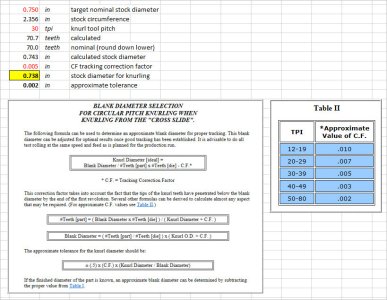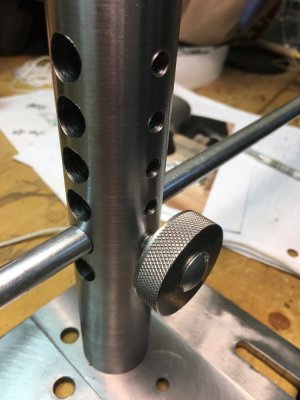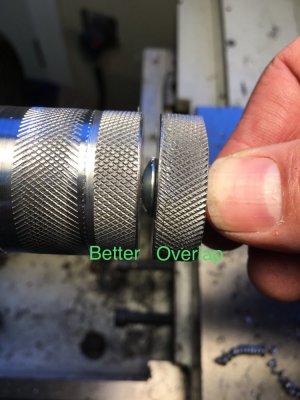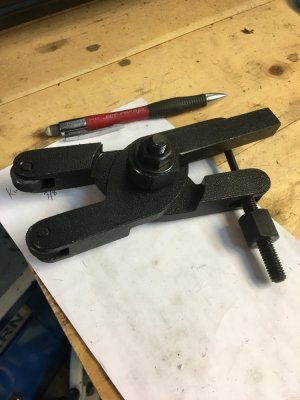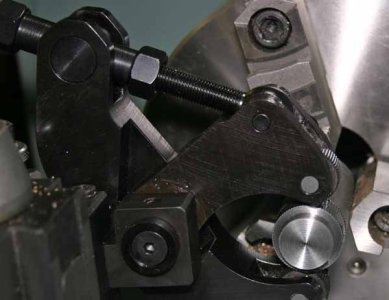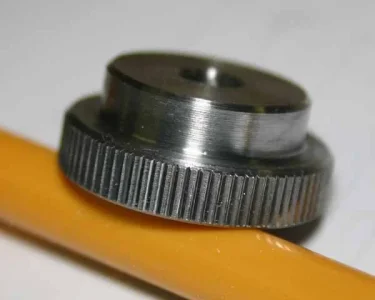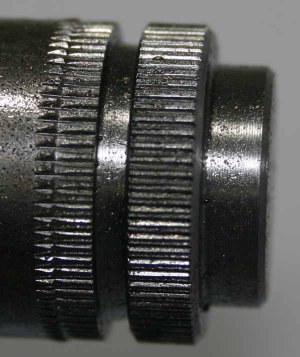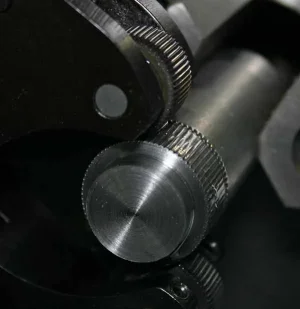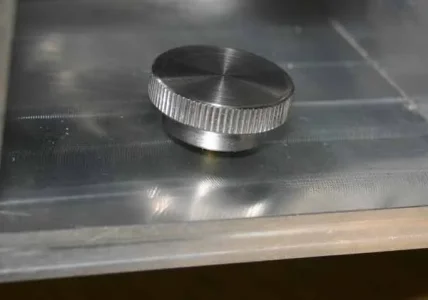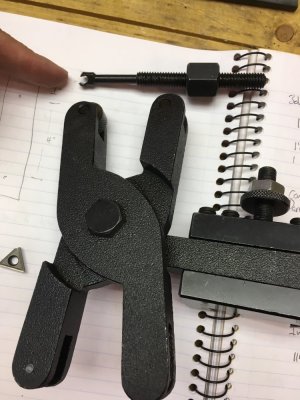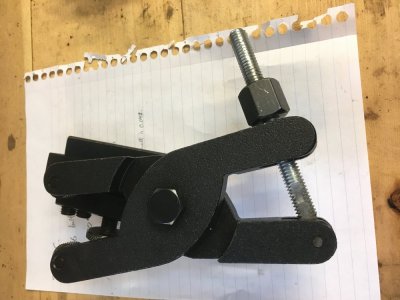Janger did my spreadsheet help with the consistency of the knurls or is it still an iffy procedure?
I am no knurling expert that for sure. I don't do it often & still get hit & miss results as the video also demonstrates. My own personal view is its because there are other factors that come into play too even if the setup & dimensions are perfect, materials & tooling can have an effect. Some materials deform well (because that's what knurling is, as opposed to cutting), others don't. Some create shavings mung which the wheels chomp on & progressively messes up an otherwise good pattern unless you can keep it clean & lubricated. The air blast looked good. Some materials like stainless work harden which may self-limit the knurling depth. Might explain why my smaller pitch knurls are OK but coarser size is either incomplete or pattern problems & clamping pressure goes way up.
Some comments specific to the video, maybe you guys have input from your experience. I visualize the interaction of knurl wheel & stock is somewhat like spur gears. I know this is a rough analogy but here goes. In a perfect arrangement the gear teeth are meshing inside one another's OD's. You could say the theoretical pitch diameter is the diameter that each wheel shares. Now if you took this perfect, known gear arrangement & did a test: run the smaller gear (knurl wheel) on top of some blank stock with same OD of large gear, the teeth pattern would not leave a perfect coincident track. No surprise there, the gear teeth are running out of phase around the circumference because the pitch circles don't yet coincide. This can only occur when they are engaged. So I don't think lightly knurling on stock & observing the pattern proves anything. Its only when the knurl wheel is at its target depth does the math work out. That's part of what the (manufacturer) sizing calculation does by factoring the knurl DP (and some correction factors).
But now it gets interesting. With scissor type knurling wheels, you are not in-feeding a set depth amount like cutting stock or threading. You are clamping down, bringing the wheels together as they deform the stock & come to some equilibrium. I guess you could work out the screw pitch of the clamp thread & relate it to degrees of turn, but most do it by feel. Also the material diameter itself is enlarging as the diamonds are being formed. So lets say the perfect feed is 0.030". If you only crank to .020" theoretically tracking should be pretty good but incomplete formed knurls. Now lets say your stock was 0.005" oversize, but you cranked in 0.025" depth. That combination makes 0.030" 'equivalent' & you may have better looking knurls with a slightly off diameter to begin with. That's maybe the one thing going for the plunge-in knurlers - the cross feed is dictating depth vs. more vague partial crank turn on scissor type. So I think its still worth getting the diameter close to ideal & eliminating some degree of problems. If you choose to ignore it, sooner or later you will stumble onto a diameter/knurl combination that is hopelessly out of phase & no amount of cranking will help. Like trying to mesh spur gears with mismatched, incompatible teeth counts.
Well, I've got some knurly knobs to make myself, so we'll see if this 'armchair machining' comes to any fruition!

Happy Knurling & Happy New Year!

